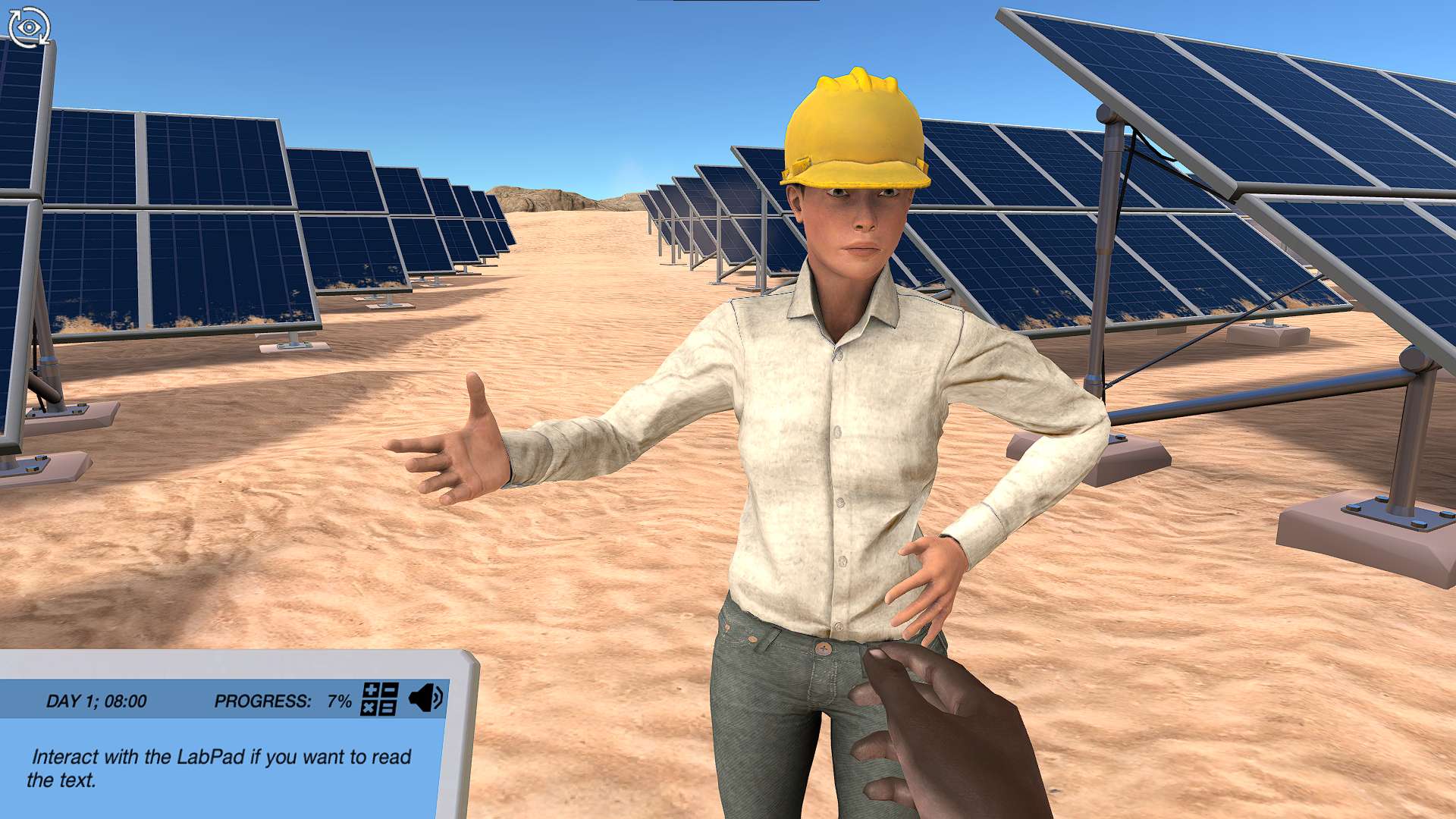Heading 1
Heading 2
Heading 3
Heading 4
Heading 5
Heading 6
Lorem ipsum dolor sit amet, consectetur adipiscing elit, sed do eiusmod tempor incididunt ut labore et dolore magna aliqua. Ut enim ad minim veniam, quis nostrud exercitation ullamco laboris nisi ut aliquip ex ea commodo consequat. Duis aute irure dolor in reprehenderit in voluptate velit esse cillum dolore eu fugiat nulla pariatur.
Block quote
Ordered list
- Item 1
- Item 2
- Item 3
Unordered list
- Item A
- Item B
- Item C
Bold text
Emphasis
Superscript
Subscript
About This Simulation
Apply the technique of bomb calorimetry to help solve the challenge of storing renewable energy. Learn about the first law of thermodynamics, enthalpy, and internal energy.
Learning Objectives
- Understand the basic steps and critical points of performing a calorimetry experiment
- Define the thermodynamics concept of enthalpy and its units
- Explain the first law of thermodynamics
- Understand the relationship between internal energy and enthalpy
About This Simulation
Lab Techniques
- Calorimetry
Related Standards
- HS-PS3-1, HS-PS3-2, HS-PS3-3, HS-PS3-4, HS-PS2-1, HS-PS2-2, PS3.B-H2
- Chemistry 6.4 Heat capacity and calorimetry
- Chemistry 5.1 Measuring energy changes
Learn More About This Simulation
This short, targeted simulation is adapted from the full-length “Basic Chemistry Thermodynamics” simulation.
Energy is one of the great subject matters of our time, but what is energy actually? In this simulation you will learn about the thermodynamic concept enthalpy and the first law of thermodynamics. You will also determine the internal energy of a chemical compound by using bomb calorimetry, and you’ll even travel inside the calorimeter to see it in action.
The challenge of storing energy
What is the best way to store energy? There is no simple answer, but in this simulation, you will be encouraged to give it some thought while learning about the very nature of energy and how it connects to chemical reactions. You will assess whether the gasoline component octane is a suitable chemical for energy storage by using a bomb calorimeter.
The fundamental concepts of thermodynamics
The first law of thermodynamics and the concept of enthalpy are introduced in this simulation. You will have access to a state-of-the-art bomb calorimeter. Travel inside to see the calorimeter to see it in action and understand how it works. From here, the concept of chemical bond energy is linked to the thermodynamic calculations of enthalpy on the calorimeter output. Discuss the total heat capacity, enthalpy, and internal energy of octane. Compare the energy densities of various fuels to discover the best fuel for energy storage.
Combine theory and practice
Throughout the simulation you will combine the fundamental teachings of thermodynamics with the experimental results from the calorimeter. Will you be able to suggest a solution for the energy storage challenge?
For Science Programs Providing a Learning Advantage
Boost STEM Pass Rates
Boost Learning with Fun
75% of students show high engagement and improved grades with Labster
Discover Simulations That Match Your Syllabus
Easily bolster your learning objectives with relevant, interactive content
Place Students in the Shoes of Real Scientists
Practice a lab procedure or visualize theory through narrative-driven scenarios


FAQs
Find answers to frequently asked questions.
Heading 1
Heading 2
Heading 3
Heading 4
Heading 5
Heading 6
Lorem ipsum dolor sit amet, consectetur adipiscing elit, sed do eiusmod tempor incididunt ut labore et dolore magna aliqua. Ut enim ad minim veniam, quis nostrud exercitation ullamco laboris nisi ut aliquip ex ea commodo consequat. Duis aute irure dolor in reprehenderit in voluptate velit esse cillum dolore eu fugiat nulla pariatur.
Block quote
Ordered list
- Item 1
- Item 2
- Item 3
Unordered list
- Item A
- Item B
- Item C
Bold text
Emphasis
Superscript
Subscript
A Labster virtual lab is an interactive, multimedia assignment that students access right from their computers. Many Labster virtual labs prepare students for success in college by introducing foundational knowledge using multimedia visualizations that make it easier to understand complex concepts. Other Labster virtual labs prepare learners for careers in STEM labs by giving them realistic practice on lab techniques and procedures.
Labster’s virtual lab simulations are created by scientists and designed to maximize engagement and interactivity. Unlike watching a video or reading a textbook, Labster virtual labs are interactive. To make progress, students must think critically and solve a real-world problem. We believe that learning by doing makes STEM stick.
Yes, Labster is compatible with all major LMS (Learning Management Systems) including Blackboard, Canvas, D2L, Moodle, and many others. Students can access Labster like any other assignment. If your institution does not choose an LMS integration, students will log into Labster’s Course Manager once they have an account created. Your institution will decide which is the best access method.
Labster is available for purchase by instructors, faculty, and administrators at education institutions. Purchasing our starter package, Labster Explorer, can be done using a credit card if you are located in the USA, Canada, or Mexico. If you are outside of North America or are choosing a higher plan, please speak with a Labster sales representative. Compare plans.
Labster supports a wide range of STEM courses at the high school, college, and university level across fields in biology, chemistry, physics, and health sciences. You can identify topics for your courses by searching our Content Catalog.







.png?fm=jpg&w=700&h=400)
.png?fm=jpg&w=700&h=400)
.png?fm=jpg&w=700&h=400)





